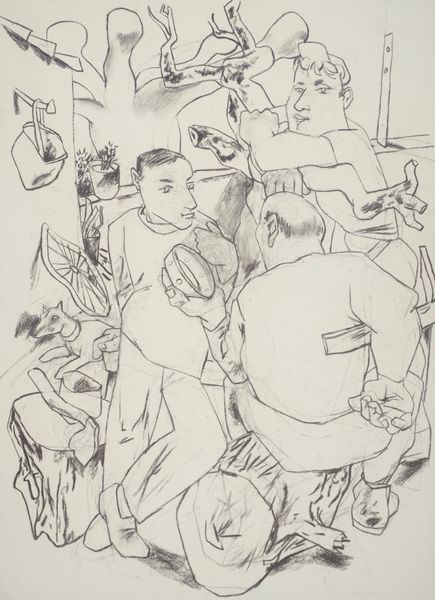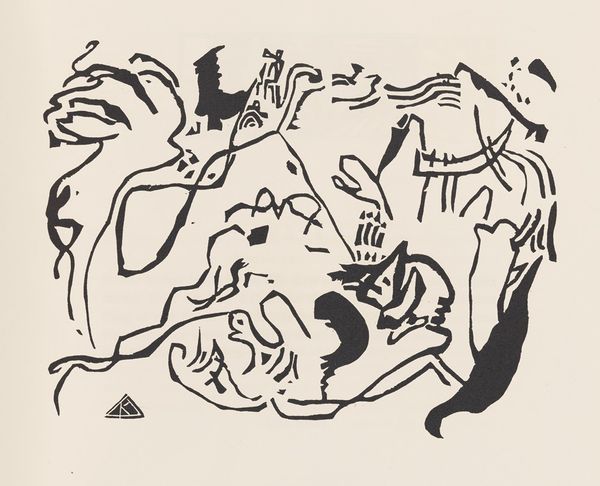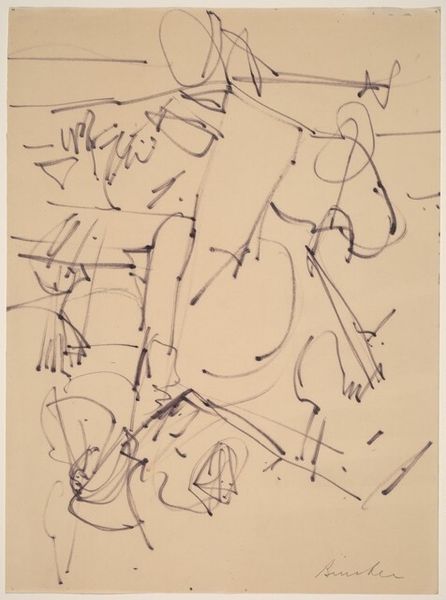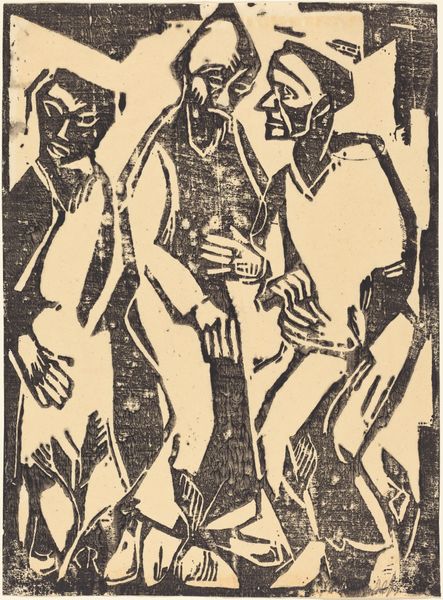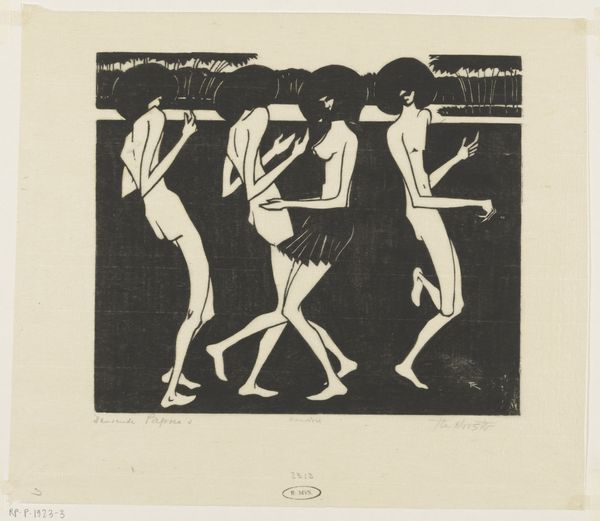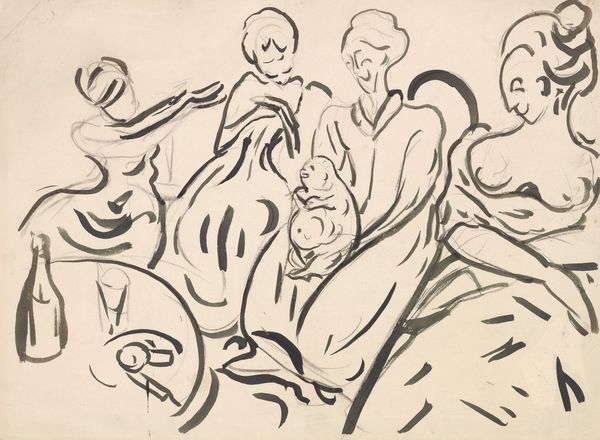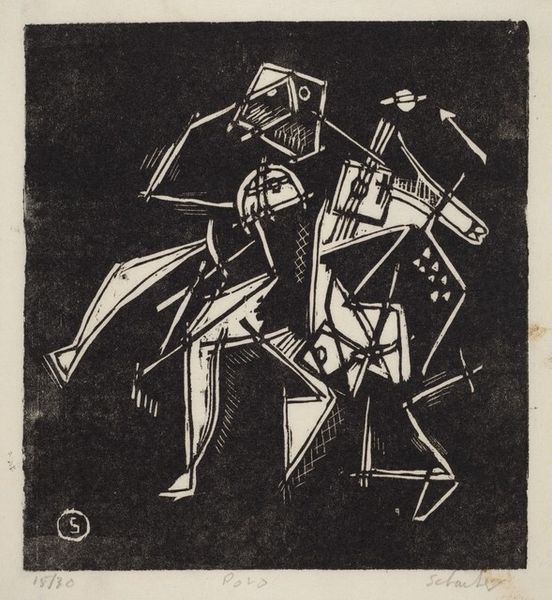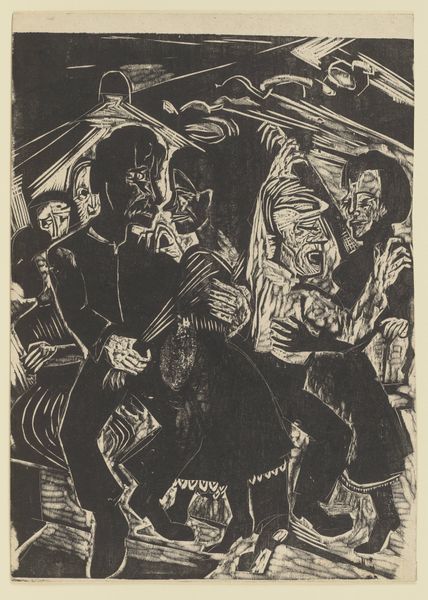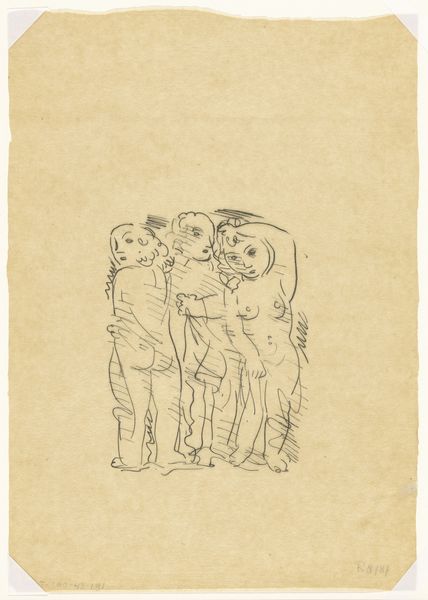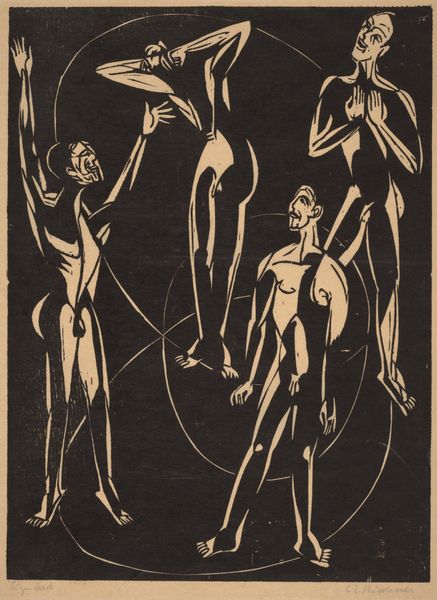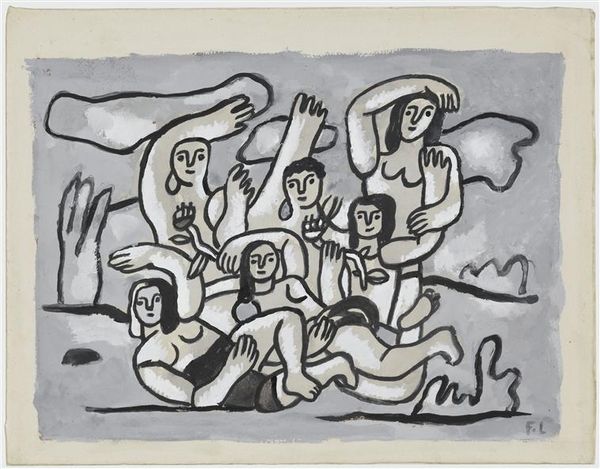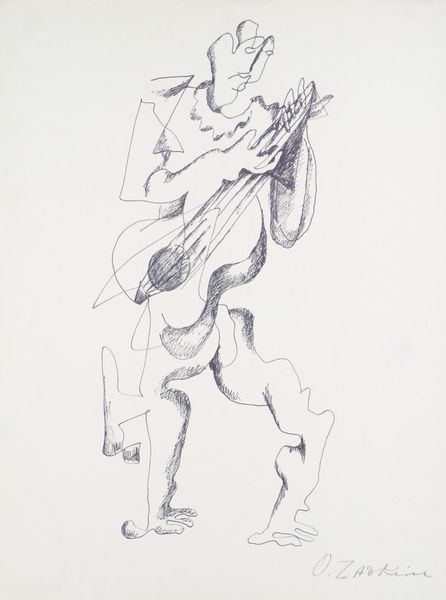
drawing
#
drawing
#
contemporary
#
figuration
#
line
Dimensions: overall: 30.3 x 23 cm (11 15/16 x 9 1/16 in.)
Copyright: National Gallery of Art: CC0 1.0
Editor: This is Mark Kostabi’s “Injunction Against Interiority,” created sometime in the 1980s, rendered in a stark line drawing. There’s something unsettling about the faceless figures; it feels like a critique. How do you interpret this work? Curator: The facelessness, precisely. What happens when we strip away individuality, and render people as mere outlines? Consider the 1980s, a period defined by hyper-consumerism and a growing sense of alienation. Could this be a comment on the deindividuation of society? Editor: I see what you mean. The figures at the back holding cameras almost suggest surveillance. Are you saying the "injunction against interiority" is a response to that kind of societal pressure? Curator: It's compelling to see them as representing a kind of self-imposed or externally enforced silencing, particularly regarding our inner lives and emotions. The performative nature of contemporary life—the constant pressure to present a certain image—could be another aspect of what Kostabi is critiquing. Note the figures stuffed within the podium, perhaps repressed voices struggling to get out? Editor: I hadn't considered that detail. It does give a voice to those that have been silenced by those in authority. So, it’s less about apathy, and more about the suppression of individual identity and thought? Curator: Precisely! Think about the broader societal context—the Reagan era, with its emphasis on conformity and a rising fear of the ‘other.’ This artwork can be read as a potent commentary on those forces at play. And those at play, even today. Editor: I came in thinking it was bleak. I am now struck by how resonant the piece is, when we unpack its commentary on society. Thank you for helping me decode this striking, minimalist work. Curator: Absolutely. It underscores art's capability to provoke discussions, even if the statement isn't immediately evident. Hopefully it motivates continued conversation, which art, at its heart, does best.
Comments
No comments
Be the first to comment and join the conversation on the ultimate creative platform.

